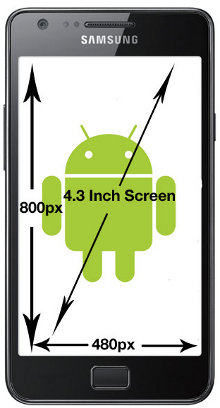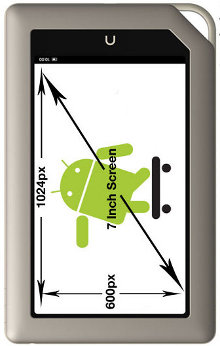Android fragmentation not so serious, says study
Feb 3, 2012 — by LinuxDevices Staff — from the LinuxDevices Archive — 46 viewsAndroid is regularly blasted for fragmentation, but most Android smartphones and tablets use similar builds, screen sizes, and resolutions, according to a study by app analytics firm Localytics. Currently, 73 percent of Android smartphone app sessions use Android 2.3, with 23 percent at Android 2.2, while 41 percent originated from 4.3 inch screens and 22 percent from four-inch screens, says the study.
Much of the negative conversation concerning Google's Android platform is predicated on the fact that it's fragmented. Specifically, the concern is that there too many operating system builds — spanning Android 2.0 to Android 4.0 — and too many devices and handset makers clogging an already crowded mobile market.
While it's not common to hear consumers complain about having too much choice, and still relatively rare to hear complaints about apps that work on one OS build but not the other, mobile app developers have expressed concern about their ability to write for the platform and make money.
Yet Localytics has collected data that suggests developers shouldn't be as concerned as previously thought. According to study, 73 percent of Android handsets tracked by Localytics run Android 2.3 ("Gingerbread") and 23 percent still run Android 2.2 ("Froyo").


Most-typical Android smartphone (left) and tablet (right) specs, based on app sessions
Source: Localytics
(Click on either to enlarge)
 Addressing the concern that Android developers must write code to fit varying screen sizes and resolutions, Localytics said a resolution of 800 x 480 pixels accounted for 62 percent of resolution specs. In addition, some 41 percent of all app sessions were said to have come from Android devices with 4.3 inch screens. These include devices such as the Motorola Droid X, HTC Thunderbolt and Samsung Droid Charge (pictured). Next up were four-inch screens at 22 percent, such as the original Motorola Atrix and Samsung Galaxy S line.
Addressing the concern that Android developers must write code to fit varying screen sizes and resolutions, Localytics said a resolution of 800 x 480 pixels accounted for 62 percent of resolution specs. In addition, some 41 percent of all app sessions were said to have come from Android devices with 4.3 inch screens. These include devices such as the Motorola Droid X, HTC Thunderbolt and Samsung Droid Charge (pictured). Next up were four-inch screens at 22 percent, such as the original Motorola Atrix and Samsung Galaxy S line.
Localytics is not arguing that fragmentation is not a problem, but the company makes a convincing case the criticism may have been overstated.
"For both screen size and resolution, Android developers have more to deal with than iOS developers, thanks to Apple's single handset form factor," stated the company. "However, with five options accounting for more than 90% of all Android app usage, the fragmentation is not particularly daunting."
Android tablets showed similar patterns, with 74 percent of all Android tablet usage coming from devices with the same seven-inch, 1024 x 600 specs, including the Amazon Kindle Fire, Samsung Galaxy Tab, and Barnes and Noble Nook Tablet (pictured farther above). Almost all of the remainder — 22 percent — are 10.1 inch devices with 1280 x 800 resolution.
All told, 92 percent of Android tablets run either Gingerbread (71 percent), or Android 3.x ("Honeycomb") (21 percent), says the study.
Fragmentation may ease as more devices adopt Android 4.0 ("Ice Cream Sandwich"), which should help fuse the fork Google created by splitting smartphone and tablets into two distinct branches a year ago. But it still doesn't ameliorate the fact the handset OEMs and carriers decide what OS version goes on their handsets and tablets, leaving it up to app developers to write several versions of their app to work on different devices. Worse, OEMs and carriers often withhold OS upgrades when they're available, in many cases because they're tailoring their UI layers to work with the updates, adding to more fragmentation.
While it's understandable that carriers and OEMs wait to push out OS upgrades until they've been properly tested, it still can lead to awkward moments. Such as when friends with Android phones made by different OEMs served by the same carrier realize one has a fresher OS build than the other. Awkward.
Clint Boulton is a writer for eWEEK.
This article was originally published on LinuxDevices.com and has been donated to the open source community by QuinStreet Inc. Please visit LinuxToday.com for up-to-date news and articles about Linux and open source.